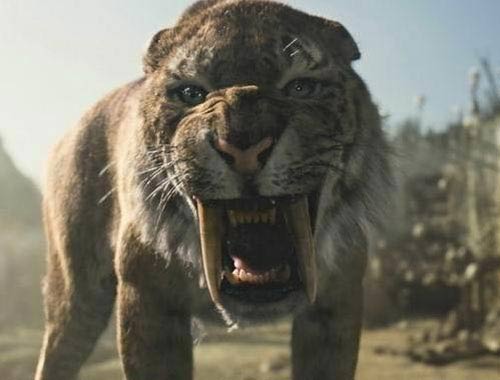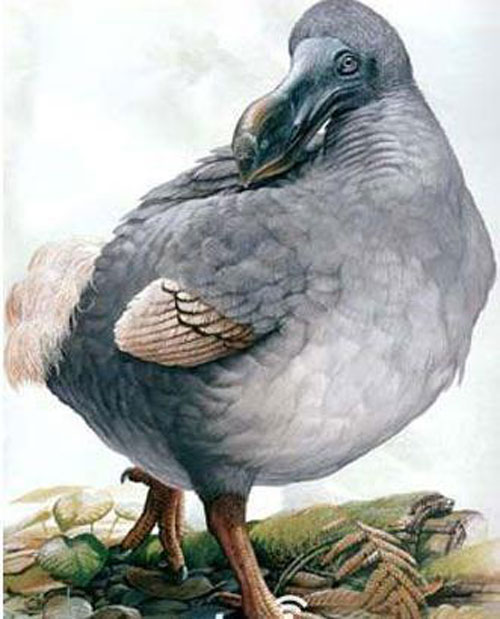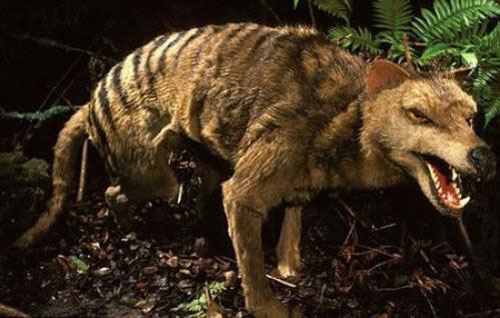10 ancient extinct animals hope to revive
Modern scientists are looking for ways to "restore" extinct animals so that humans can admire their appearance.
Before humans appeared, animals existed on Earth, but along with the passage of time, these animals became extinct.
Modern scientists want to 'restore ' these extinct species, so that we humans can admire their appearance. Although this is not an easy thing, it is not entirely impossible. Here are 10 extinct animals that scientists want to resurrect.
1. The toothed tiger, extinct 10,000 years ago, its DNA is perfectly preserved

This type of animal with giant fangs like this myth will be a wonder to watch. Here, the swamp tooth specimen was preserved after being obtained from La Brea Tar Pits, Los Angeles, but DNA sampling from La Brea Tar Pits was difficult, so no humans have been available so far. separate the DNA sequence of the sword tiger's DNA.
2. Dodo birds, extinct from 1690 years ago

Scientists now have only one mitochondrial DNA fragment of the Dodo bird. That word is not even a little bit of this bird's DNA. But there are still opportunities to find. If the bird's DNA can be found, scientists can use DNA to create the gene sequence, then plant it into the pigeon's body, to help restore this extinct relative.
3. The Tasmanian tiger, until the end of 1936, was completely extinct

In 1936, the Tasmanian tiger, also known as the last fox, died at Hobart Zoo, Australia. The time to preserve Tasmanian tiger organizations is less than 100 years, which means that experts can get high-quality DNA, and in the near future can form a complete genetic sequence. . The recovery of marsupial species such as the Tasmanian Tiger is probably much easier than other mammals.
4. Animal carving, South American animals have become extinct for 11 thousand years

The giant tatu like a Volkswagen Beetle has a medium-long tail that is as sharp as a stick. It caught the attention of villages in South America. Because there are no frozen etching animals , to get the right DNA, certain scientists have to find the perfect preserved tooth carcass in a cool and dry cave. In addition, scientists have encountered a more difficult problem: The most suitable animal that carries the carcass fetus can hardly be as heavy as this giant armadillo.
5. People in the cave, extinct 25 thousand years ago

Svante Paabo, from the Max Planck Association for Evolutionary Human Studies, Leipzig, Germany, said: 'To obtain a good quality gene combination, for example, the gene combination can be compared with the gene of the black ape, perhaps it takes up to 2 years or more. ' He and his colleagues hope this gene combination can make us more aware of the difference that exists between humans and this close relative. Moreover, they also said that they could use this combination of genes to resurrect the Andeteer people , because the Andeteers have blood ties very close to humans. Therefore, people will be the ideal donor and pregnant woman.
6. Short-Faced Bear extinct 11 thousand years ago

When the short-faced bear is straight, its height is probably equal to one-third of the polar bear's height, and the body weight may reach 1 ton. Because their bodies are preserved in permanent frozen areas, scientists will most likely detect their DNA sequences.
7. The Irish deer, extinct 7700 years ago

Strictly speaking, the Irish deer is a deer , not a deer. The closest blood relative to it is a very small deer, about 1000 years ago, they each evolved in a different way.
So far, it is still very difficult to find a way, making this deer's complete gene combination eventually become a life-breathing life.
8. Giant ostrich, completely extinct around 1850

Scientists can collect the giant ostrich species DNA in their bones, even their eggs, which are perfectly preserved in New Zealand caves, from which the gene pool can be used. The resurrection of giant birds (about 3 meters high) is very attractive to scientists. Ostrich is the distant relative of the giant ostrich species, but in ostrich eggs it is possible to find the giant ostrich's gene complex. Currently the cloning of birds has not been successful, but the most feasible way is to change ostrich embryos into embryos of giant ostriches.
9. Long-haired, extinct rhinoceros 10,000 years ago

Like mammoths , samples of long-haired rhinoceros are very much preserved, feathers, horns, and nails are all usable. The scientists used cleaning agents to wash away the parts, remove contaminated and contaminated DNA, then solvent to extract the pure DNA of the long-haired rhino. Therefore, it is likely that soon, genetic experts will publish the complete gene pool of this species.
10. The child was huge and extinct 8000 years ago

The giant 6m high, weighs 4 tons, the time of extinction is not long, which means scientists can find their fur samples. Because hair samples are extremely good sources of DNA. Currently, Hedrick of Megathen University, Canada has extracted DNA samples from fossilized feces of giant sloths 30 thousand years ago.
- Tail pieces can help revitalize extinct bison 12,000 years
- Cloning animal clones from prehistoric times to create Jurassic Park
- The reasons for extinction of animals are more difficult than we imagined
- What will the world be like if dinosaurs and mammoths revive?
- Can revive mammoths
- The ambition to revive the extinct breed
- Why does science have to spend tens of years just to revive mammoths?
- What do scientists do to revive dinosaurs?
- Why need to revive the mammoth
- About to revive the extinct Persian tiger
- Reviving the 1.500kg extinct bison, 400 years old
- Can still revive the dead
 Animal 'suffering' after hibernation
Animal 'suffering' after hibernation Why do goats climb well?
Why do goats climb well? Scientists were surprised to see chimpanzees eating turtles
Scientists were surprised to see chimpanzees eating turtles Giant catfish died deadly due to drought in Thailand
Giant catfish died deadly due to drought in Thailand